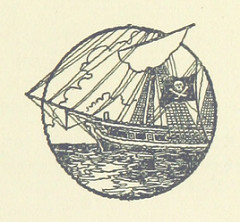As a taster of the content that’s going up on our shiny new website, here’s an image that I put together earlier:

This, as you can probably tell, is a draft version, but what it shows is a map of interreference between novels and novelists in our corpus.
Writers, unsurprisingly, are generally people who enjoy reading novels, and a lot of our authors make explicit reference to their favourite books in their own works. As we mentioned before, Jane Austen expresses strong feelings on the subject of her preferred reading material in Northanger Abbey, but she’s not the only writer to slip in a quote or a mention of a favourite novel, or even to show one of their characters reading one; they are inveterate name-droppers!
Some of the authors in our corpus are particularly keen on literary allusions – for example, Middlemarch is stuffed full of quotes and epigrams, and also gives the reader a view of the Garth family enjoying a book together, by listening to young Jim Garth read Ivanhoe* out loud. This means that it shows up as a major hub, with lots of outgoing links. Other novels, meanwhile, have a surprising number of ingoing links, showing that they were very influential on 19th-century authors, even if they are less well-known today. For example, The Vicar of Wakefield is mentioned in works by Jane Austen, Maria Edgeworth, George Eliot, and Mary Shelley, which means it was present on the bookshelves of some very significant literary heavyweights!
We started compiling data on literary interreferences when we realised how many links there were between the books in our corpus, and soon we had a fairly significant stockpile. I’ve mostly included data on novels here, with a couple of poems and poets simply to make things more interesting, but we have also recorded many other types of literary allusions (to drama, mythology and folklore among others). If I included all of the links to Shakespeare, the network would instantly become unreadable – especially if I were to do it by hand!
Speaking of which – unlike most of our nice, clear, algorithmically-generated networks, this is a scribbly hand-drawn one, partly because I wanted to see if I could do it, and partly because I wanted to illustrate that these were different types of link. However, that means that the data is somewhat patchy! You might reasonably have some quibbles with the info that I’ve included (or failed to include – I must confess that I have very little familiarity with some of the works here, particularly the 18th-century ones), so please let me know if you have any feedback or suggestions!


*Walter Scott is not named here – he’s so famous there’s no need! – but instead is described as “that beloved writer who has made a chief part in the happiness of many young lives”. Elsewhere in Middlemarch, Mr. Borthrop Trumbull also describes Walter Scott and Ivanhoe in glowing terms:
I have bought one of his works myself—a very nice thing, a very superior publication, entitled ‘Ivanhoe.’ You will not get any writer to beat him in a hurry, I think—he will not, in my opinion, be speedily surpassed.
We are probably not meant to take Mr. B-T’s opinions entirely at face value, but even so it sounds like George Eliot was a bit of a fan.
